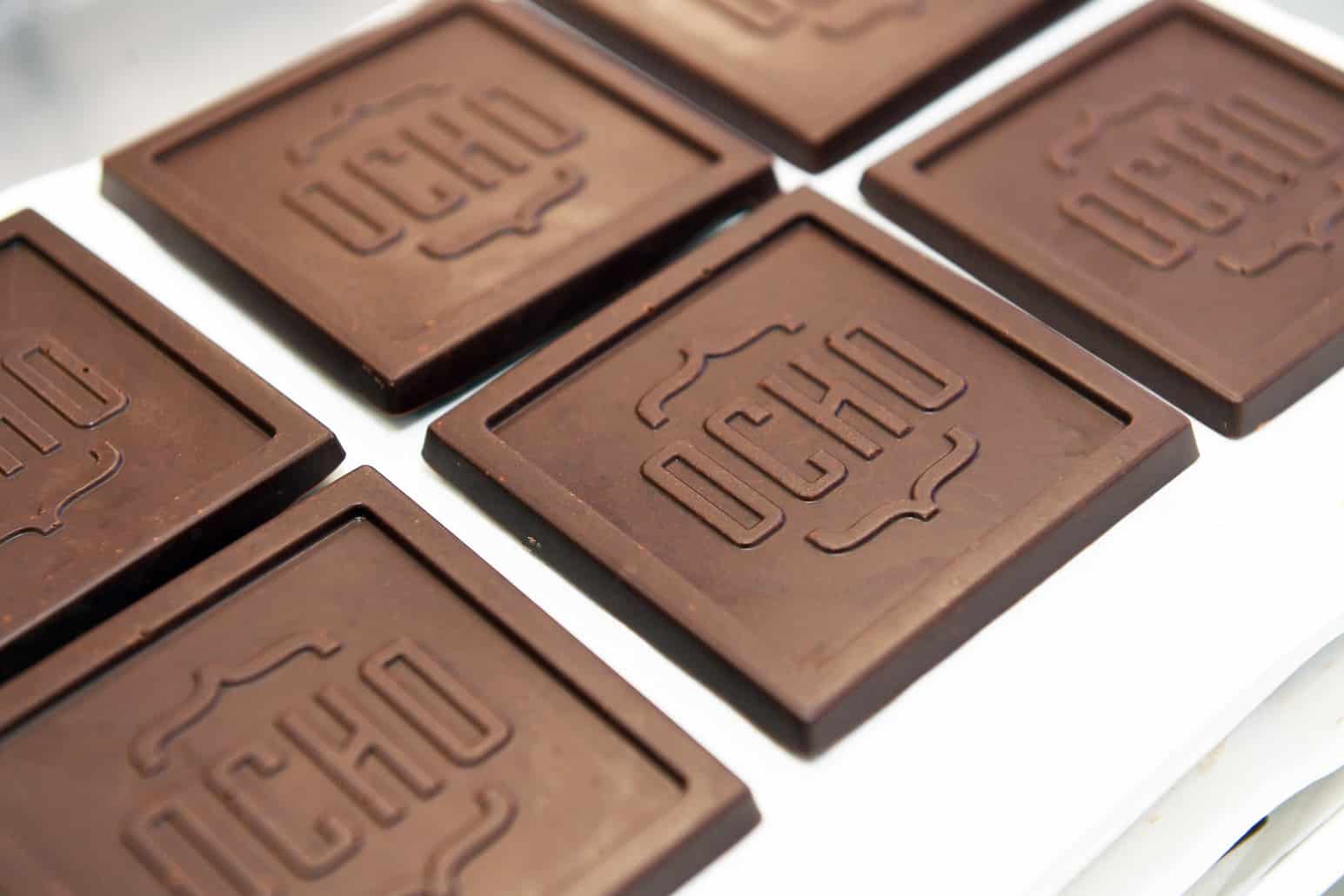The dark side

When Cadbury manufacturing went to Tasmania, it could have spelt the end of Dunedin’s rich chocolate history. However, up stepped OCHO, and the new chocolate factory tour might change your cravings forever.
Words Kate Preece
I will never eat white chocolate again. I had been told it wasn’t ‘real’ chocolate, but I assumed those saying so were merely biased. The ‘healthy’ ones swear by dark chocolate, but, for me, dark has always been too bitter and drying – and any perceived connection between health and chocolate delusional. It all changed with a trip to Dunedin’s bean-to-bar chocolate factory.
From bean to bar . . . Ocho marketing manager Anna McDonald and general manager Liz Rowe Ocho chocolate factory
When Liz Rowe was on a language exchange programme in Mexico eight years ago, she had a hankering for chocolate. Always one to have a bar of dark chocolate in the fridge, her craving led her to a local market where she tasted chocolate like she’d never tasted it before: “It wasn’t chocolate as I knew it.” It turns out, what we’re used to consuming in New Zealand doesn’t do the flavour of the humble cocoa bean justice – masking it with lashings of cocoa butter and an unidentified smattering of unknowns. So, when Liz returned home, she set about replicating this pure recipe of cacao bean and sugar.
In 2013, the Otago Chocolate Company Ltd (OCHO) became one of the few chocolate companies in New Zealand making chocolate from the bean stage. What we know as ‘craft chocolate’ is finished chocolate, imported from places such as Belgium, then melted down and reprocessed by the chocolatier. Taking it a few stepped back up the chain, Liz established connections with Papua New Guinea, Solomon Islands and Fiji cacao farmers, who now send sacks full to Dunedin.
During a factory tour at OCHO, video footage tells the story of a bean’s journey from tree to table. It takes five years for a tree to start producing cacao pods, but harvest is then fairly consistent with both ripe and unripe pods present on the tree at the same time. Farmers scoop 20 to 40 ‘wet beans’ out of each pod and leave these in wooden boxes to ferment naturally. During this time, the white matter surrounding the beans disappears. The beans are then dried (either in the sun or with the assistance of fire), weighed, quality controlled, and packaged into sacks for export. Those at OCHO become 250kg of chocolate in a 24-hour period.
Step inside the door of 10 Robert Road and you are immediately struck by the intense chocolate smell. From an octagonal, glassed-in viewing space, you can watch all the different parts of the chocolate-making process at play. Beans are roasted, winnowed and refined, then conched before forming solid blocks of chocolate. These blocks are tempered, poured into moulds, agitated to ensure there are no bubbles and then cooled – passing along a conveyor belt so slowly it is hard to tell there is any movement at all.
The shiny stainless-steel machinery from Italy was bought using money raised through crowd-funding. Mondelez International closed the Cadbury factory in May 2017, 300 people lost their jobs, and the Dunedin community didn’t want to lose that chocolate connection. In less than 48 hours, in November 2017, the maximum of $2-million was raised by 3549 pledgers, who gained a share of the OCHO Newco and 20% discount for life for each $100 donation.
Somewhat ironically, the tasting part of an OCHO tour might put you off your go-to supermarket brands. And it comes down to what, other than cocoa and sugar, makes up your bar. The 66% Cacao PNG, contains 66% cocoa and 30% sugar; that’s it. No cocoa butter, miscellaneous numbers, flavours or emulsifiers. It tastes fruity – to the point that when I first tasted it, it reminded me of a traditional fruit and nut variety. Yet, all the flavour is coming from that Papa New Guinean bean. You won’t find yourself munching through block after block, either. Liz explains that the high sugar content of different brands ensures a flavour hit that’s quick, but also one that leaves as rapidly as it arrived.
I nibbled on the slightly acidic-tasting fermented cacao bean and nutty, toast-flavoured roasted nib (broken up bean) as we progressed through to the shelf-ready product. Along the way, there’s pure cacao and pure cocoa butter. The latter was my undoing. It’s the fat of the bean, squeezed out, and, in its purest form, personally, much better rubbed on the hand than put anywhere near the tongue. And thus came the unravelling of my white chocolate love. “You may as well make butter cream icing,” shrugs Liz.
It’s all about the cacao. I went through the tour twice, the second time taking someone who described herself as not much of a chocolate fan. Well, consider us re-educated.



